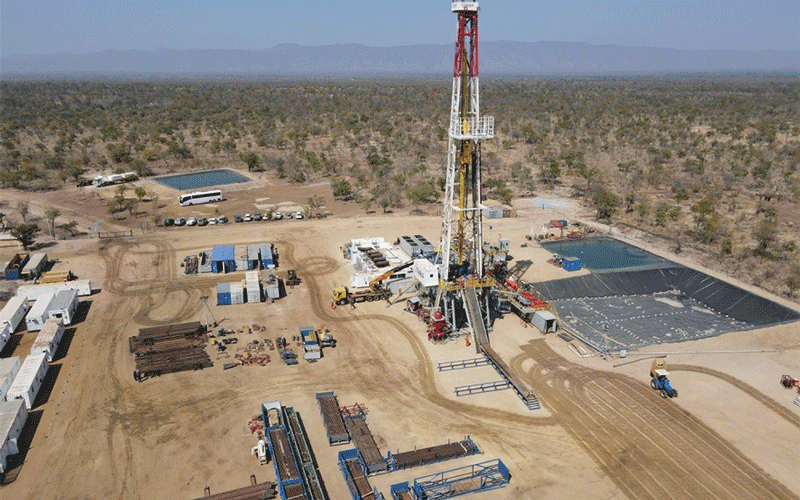
AUSTRALIAN energy firm, Invictus Energy Limited yesterday announced the completion of its geological survey which mapped out potential gas and oil leads in preparation for the second exploration drilling programme.
Around the middle of last month, the firm, hoping to make Zimbabwe’s first oil find, told its shareholders that it had begun a seismic acquisition programme at its second drilling site of Mukuyu as it moved to complete prospecting the area.
A seismic acquisition is a process used to map geological structures beneath the earth’s surface or beneath the seabed and is common practice in the exploration of oil and gas.
In a statement to shareholders released yesterday, Invictus managing director Scott Macmillan announced the completion of the project, promising that the results would lead to several exciting new leads.
“The new data will provide additional coverage of several exciting leads in the east of the basin that were identified on our CB21 and legacy Mobil datasets. Initial field processing of the seismic data demonstrates structural closure at multiple target intervals across a number of leads in the Central Fairway and Basin Margin play,” he said.
“Following the full processing and interpretation of the new data, we are aiming to mature those leads and add to our material prospect portfolio as candidates for future exploration drilling. We are extremely pleased with the performance of Polaris and the local field crew who have delivered a high-quality project on time and on budget with excellent health and safety performance and no lost time incidents.”
According to Invictus, 425km of high quality 2D seismic data from the acquisition programme was acquired.
The firm says this data will provide enhanced coverage of prospects and leads identified in the eastern areas of Invictus’ Cabora Bassa basin acreage.
- Invictus completes geological survey
Keep Reading
“The survey, which was completed on time and on budget, was acquired on Invictus’ behalf by Polaris Natural Resource Development Ltd (Polaris) and is complementary to Invictus’ existing CB21 survey (also acquired by Polaris),” Invictus said.
Macmillan said the successful completion of the firm’s second survey in the basin marked a significant milestone for Invictus.
“We are proud of how we have engaged and involved the local communities and stakeholders which provided over 100 jobs in the delivery of the programme,” he said.
“With our preparations for the drilling of Mukuyu-2 this quarter well underway, these are exciting times for the company.”
The seismic survey began after IEL raised capital to resume its activities, following the firm briefly halting operations in December 2022 at the drilling site after confirming light gas condensate, oil, and helium in May.
The drilling site is located in Mashonaland Central province’s Muzarabani area, northeast of Zimbabwe.
Invictus spent A$12,664 million (about US$8,41 million) towards exploration and evaluation activities during the quarter ended June 30, 2023.
During the quarter, the firm successfully raised a combined A$35,4 million (about US$23,57 million), placing the company in a strong position as it embarks on its next phase of exploration and appraisal in the Cabora Bassa Basin.
Compositional analysis was completed during the quarter for five priority mudgas samples acquired during the drilling of the Mukuyu-1/ST-1 well in selected Upper Angwa reservoir units.
The results confirmed the presence of light oil, gas-condensate and helium.
The results confirmed multiple oil and gas pay zones in sandstone reservoirs consistent with wireline log interpretation and fluorescence observed in sidewall cores and cuttings.










